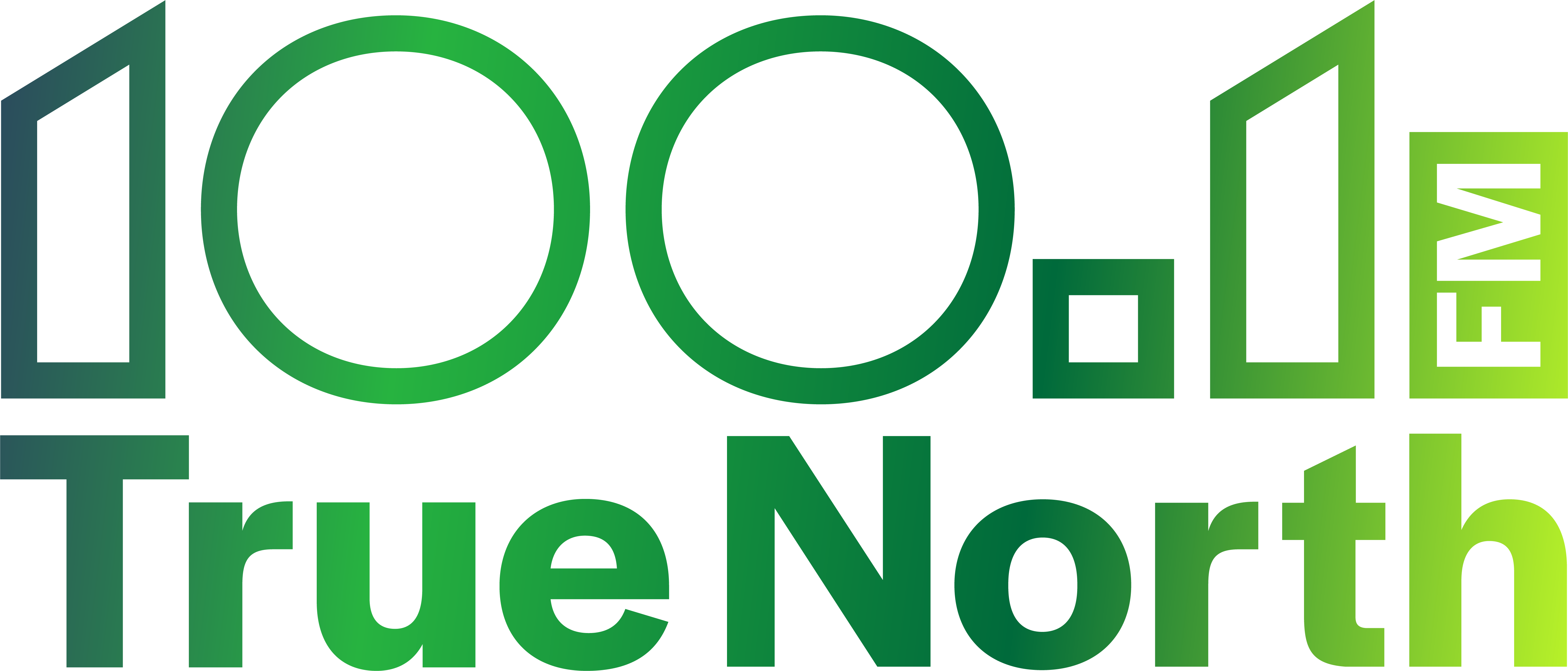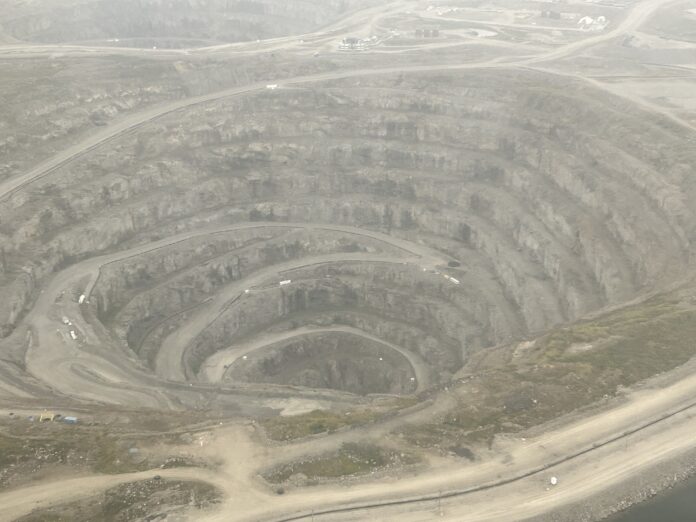GNWT just announced they are implementing “targeted relief measures” to support the diamond mining sector.
Minister Caroline Wawzonek, who is GNWT’s Minister of Finance, said the relief measures deal with previous fund contributions by mining companies to the Large Emitter Green House Gases Reducing Investment Fund. GNWT said the measures are temporary and not meant to replace corporate financial obligations.
The measures will “double the number of local diamond valuations” and cover associated costs up to 2026. The new policy will temporarily bring down the 2025 general mill rate for Class 4 – Minerals. This measure will bring $11.2 million in targeted property tax relief.
Minister Wawzonek emphasized that all of the mines continue to be subject to all of the requirements put in place by the Environmental Monitoring Board.
The move comes in response to “growing financial pressures and industry-wide uncertainty. “
In NWT, the diamond mine sector is the “largest industry and biggest contributor to the economy
“These actions are designed to maintain economic stability, support local employment and businesses, and sustain decades of Indigenous economic partnership and regional development,” GNWT said.
Diamond mines employ more than 1,000 people living in the territories and bring in about 20 per cent of the NWT’s GDP.
GNWT pointed to some of the compounding pressures the NWT diamond sector has been facing such as low global diamond prices, inflation, supply chain disruptions, and ongoing tariff impacts.
The GNWT said that these pressures have resulted in “significant financial losses” and “growing uncertainty” for the industry.
GNWT said the measures address economic concern risks, which have been expressed by industry leaders and Indigenous development corporations.
“Without action, there is a clear risk of disruption to Northern jobs, contracting opportunities, and the economic stability of communities that rely on the sector. The diamond industry employs more than 1,000 Northerners and supports millions in annual activity across the territory. Collectively, the NWT’s three operating diamond mines contribute approximately 20 percent of the territory’s Gross Domestic Product (GDP).”
GNWT said that they have reached an agreement in dialogue with mine operators, Indigenous development corporations, and federal officials.
Under this agreement the GNWT will:
- Double the number of local diamond valuations in 2025–2026 and cover the associated costs, improving cash flow by allowing producers to get product to market faster;
- Temporarily reduce the 2025 general mill rate for Class 4 – Minerals, providing $11.2 million in targeted property tax relief among the three mines;
- Release remaining balances from the Large Emitter Greenhouse Gas (GHG) Reducing Investment Fund, returning carbon tax contributions to Ekati and Gahcho Kué mines to support ongoing operational costs. Diavik Diamond Mines previously accessed the Large Emitter Fund to help finance its 2024 solar panel installation; and
- Continue working with Indigenous governments and development corporations to engage federal partners on additional infrastructure and transition supports.
“This is about protecting our economy from sudden shock. The diamond sector has been central to the Northwest Territories’ economy for decades, and we have a responsibility to act when the stakes are this high. These targeted, short-term supports are not about corporate profits—they’re about maintaining stability for the workers, families, communities, and Indigenous governments that rely on this sector. Our government’s support must be directed to ensuring that NWT-based labour and businesses are protected in this challenging operating environment,” said Minister Wawzonek in the April 22 statement.
Minister Wawzonek told True North FM that the mining companies are still required to pay carbon taxes and are still required to follow strict environmental standards.
“All of the mines are still subject to all of the requirements put in place by the Environmental Monitoring Boards. So they are all quite subject to water monitoring, wildlife monitoring. None of that changes and none of that goes away and none of that gets filtered, doesn’t matter what the economic situation is. Those are the obligations they operate under and will continue to operate under. They are also subject to various commitments that they make in terms of their closure, in terms of Reclamation and none of that changes, none of that goes away, those are quite firm.”
Wawzonek said the “relief measures” pertain to the Large Emitters Fund, where up until about two years ago, mining companies had been paying a portion of their taxes into this fund.
The fund was to go toward a greenhouse gas reduction project.
Wawzonek explained that a couple years ago, the federal government changed their system.
“The federal government changed their rules a couple years ago.”
Wawzonek said that two of the mining companies had solar projects in the works but hadn’t used the funds yet.
“The money is just sitting there and it’s really money that this meant for the diamond mines to help them offset their costs.”
As for the GHG projects Wawzonek said GNWT still “expects to see that come forward.”
“We also want them to be employing Northerners,” said Wawzonek.
The employment of local populations will also allow the government to collect GST, said Wawzonek.
Under the circumstances of “so much economic uncertainty” Wawzonek said it was time to change this the policy to free up funding that was sittng unused.
Minister Wawzonek emphasized that the policy change is temporary. The solar projects will be expected to resume in the future “in an orderly way, they can get to a place where they’re planning those solar projects over time.”
On April 16 the Det’on Cho Group of Companies, Tłįchǫ Investment Corporation, Metcor Inc., and the Denesoline Corporation Ltd released the results of a study showing the economic impacts of Indigenous participationn in the N.W.T. Diamond Mining Industry over the past 25 years.
Graeme Clinton, an economist, analyzed the impact of the diamond mines on for Tłįchǫ Investment Corporation, Det’on Cho Group of Companies, and Metcor Inc and their respective communities – Tłįchǫ Government, Yellowknives Dene First Nation, and North Slave Métis Alliance.
“The goal of the project was to estimate the contribution of labour and capital from within the three groups to the three existing NWT diamond mines.
The report highlighted some of the ways Indigenous companies have created economic growth opportunities within their communities and within the diamond industry:
- 355 Indigenous jobs, including direct, indirect, and induced (or community-based service jobs associated with the diamond industry) by individuals living in Yellowknife, Ndilǫ, Dettah, and the four Tłįchǫ communities of Behchokǫ̀, Whatì, Wekweètì, and Gamètì.
- $39.6 million in annual employment income for local Indigenous residents.
- $104 million in annual revenues to the IDCs, representing 36% of the total spent by the diamond mines in the NWT business community.
“With support from the diamond mines, the capacity developed by IDCs’ businesses has enabled them to complete increasingly complex projects. The multi-year Tłįchǫ housing initiative, NSMA Métis Community Freezer-Meat Processing Facility, and Det’on Cho Logistics’ expansion into Nunavut and Saskatchewan all exemplify this growth,” Marc Whitford, president of North Slave Métis Alliance – Metcor Inc, said in the announcement.
In a joint statement, Paul Gruner, CEO of Tłįchǫ Investment Corporation; Mark Lewis, president and CEO of Det’on Cho Group of Companies; and Leigh-Anne Palter, CEO of Denesoline Corporation, affirmed the report’s findings.
“This report crystallizes the progress towards Economic Reconciliation made over the last twenty-five years through our relationships with NWT diamond mines to build capacity for corporations, develop our employees, create shareholder value for our members, and make direct investments in our respective communities,” they said.
“We recognize immense opportunities to preserve and build upon this foundation and retain skilled Northerners in the North to work on the much-needed infrastructure that will create opportunities for the region, fortify Arctic sovereignty, and improve the lives of Northerners,” they said.
In today’s statement, the GNWT confirmed they are working with Indigenous development corporations to find ways to support winter road infrastructure that supports mine access.
Laura Worsley-Brown, manager of communications and government relations of the Diavik Diamond Mine issued a statement on behalf of the Diavik Diamond Mines, Burgundy Diamond Mines, De Beers Canada and Mountain Province Diamonds.
The companies outlined the “vital” role of diamond mining in N.W.T.’s economy.
“Diamond mining is the largest private sector contributor to the NWT economy in terms of jobs and business investment. Together, the active diamond mining companies spend almost $1.3 billion per year, of which approximately $900 million is with northern businesses. The mines have an estimated workforce of 3,200, with more than 1,000 northern workers.”
The companies thanked GNWT for their collaboration and financial support for the diamond industry amid a time of economic challenges.
“ The mines will utilize the relief measures to support NWT Indigenous and other NWT resident labour and businesses,” they said.





